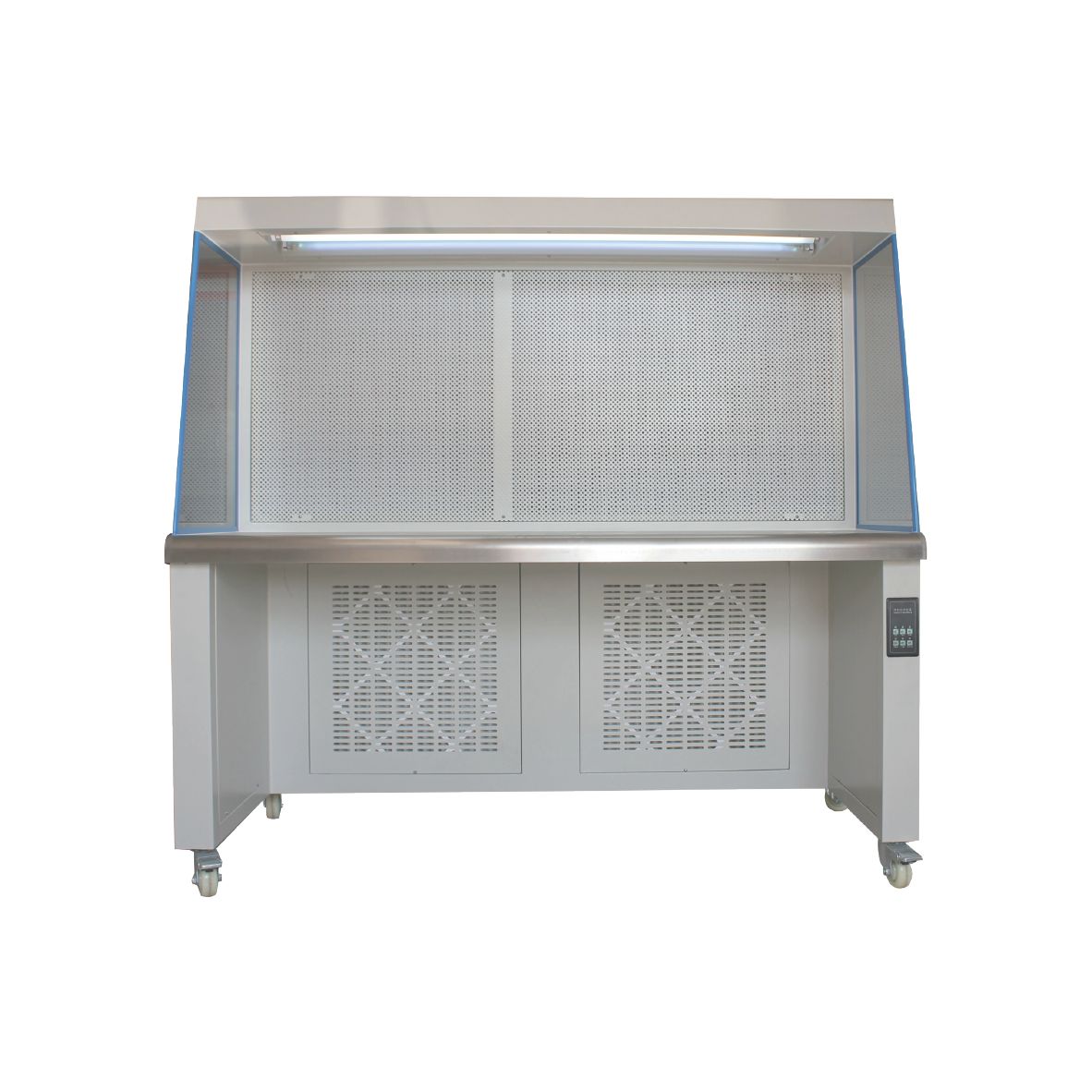
- English
- Español
- Português
- русский
- Français
- 日本語
- Deutsch
- tiếng Việt
- Italiano
- Nederlands
- ภาษาไทย
- Polski
- 한국어
- Svenska
- magyar
- Malay
- বাংলা ভাষার
- Dansk
- Suomi
- हिन्दी
- Pilipino
- Türkçe
- Gaeilge
- العربية
- Indonesia
- Norsk
- تمل
- český
- ελληνικά
- український
- Javanese
- فارسی
- தமிழ்
- తెలుగు
- नेपाली
- Burmese
- български
- ລາວ
- Latine
- Қазақша
- Euskal
- Azərbaycan
- Slovenský jazyk
- Македонски
- Lietuvos
- Eesti Keel
- Română
- Slovenski
- मराठी
- Srpski језик
What are the features to look for when choosing a clean bench
2024-10-08

What are the features to look for when choosing a clean bench?
When choosing a clean bench, several factors need to be taken into consideration to ensure that one selects the right product. Some of these features include:
1. The type of clean bench - vertical, horizontal, or recirculating
2. The dimensions and configuration
3. The type of filter – HEPA or ULPA
4. The airflow and sound levels
5. The safety features
6. The ease of maintenance and serviceability
How do clean benches work?
Clean benches work on the principle of laminar airflow that prevents the contaminated air from entering or leaving the work surface. The filters fitted in the clean bench remove impurities from the air, providing a high level of air purification that is essential for conducting accurate results in experiments and research.
What are the applications of clean benches?
Clean benches are used in a variety of applications where a controlled or sterile environment is essential. Some of the most common applications include:
1. Medical and pharmaceutical facilities
2. Microbiology labs
3. Food and beverage testing
4. Electronic industry
Why are clean benches important in laboratory settings?
Clean benches are critical in laboratory settings as they provide a clean and sterile environment that helps reduce contamination and prevent experimental errors. The high level of air filtration provided by clean benches also enhances the accuracy and reliability of experimental results, making them a crucial tool in laboratory research.
To summarize, when selecting a clean bench, several features should be taken into account, including product type, dimensions, filters, airflow, safety features, and ease of maintenance. Clean benches are essential in laboratory settings, and they work by producing a controlled, sterile environment for a variety of applications, including medical and pharmaceutical facilities, microbiology labs, and the food and beverage testing industry.
Suzhou Jinda Purification Engineering Equipment Co., Ltd. is a renowned manufacturer and supplier of cleanroom equipment, including clean benches. Our clean benches are designed to meet the highest industry standards and specifications, making them ideal for use in laboratory settings. For inquiries, please contact us at 1678182210@qq.com.
10 Scientific Research Papers Related to Clean Benches
1. Peh, W. C., Jong, L. N., & Chee, H. Y. (2016). Application of a clean bench for the preparation of microalgal culture media. Journal of Applied Phycology, 28(4), 2239-2247.
2. Chen, X., Chen, Y., & Li, J. (2020). Study on the Performance of HEPA and ULPA Filters in a Clean Bench. Journal of Applied Science and Engineering, 23(2), 203-213.
3. Lim, J., Lee, E., & Ahn, C. H. (2018). The Use of a Clean Bench for the Multiplex Detection of Human Respiratory Viruses. Archives of Virology, 163(8), 2205-2210.
4. Yang, B., Peng, Z., Li, X., Huang, J., Li, M., & Liu, S. (2020). Comparison of self-made and commercial clean bench in joint procedures for knee arthroplasty. Journal of Orthopaedic Surgery and Research, 15(1), 351.
5. Akinronbiye, J., Adeniyi, A., & Tijani, O. (2019). Assessment of Microbial Contamination of Clean Benches in The Microbiology Laboratories of Three Nigerian Universities. International Journal of Microbiology, 2019, 1-5.
6. Wu, X., Xiu, Y., Liu, H., Li, L., & Xie, X. (2017). Development of a disinfectant atomizing nozzle suitable for a clean bench disinfection machine. Journal of Environmental Health Science & Engineering, 15(1), 1-8.
7. Lin, Y., Zhang, J., Chen, Q., & Chen, R. (2019). Spatial distribution and characterization of indoor fine particulate matter using portable monitors in clean bench facilities. Building and Environment, 160, 106169.
8. Dombrowski, R. G., & Morales, O. (2016). Optimization of the balance monitoring performed under the clean bench: a proposal of control weekday, brightest and font size. Revista Cubana de Farmacia, 50(3), 413-420.
9. Kim, K. S., Kim, Y. H., & Go, J. (2017). Comparison of airborne bacteria and current cleanroom classification in a clean bench. Journal of Bacteriology and Virology, 47(2), 47-54.
10. Chen, Z., Yuan, Y., & Li, X. (2017). The effect of material attributes on performance of a spray drying system on a clean bench. Drying Technology, 35(1), 22-32.



